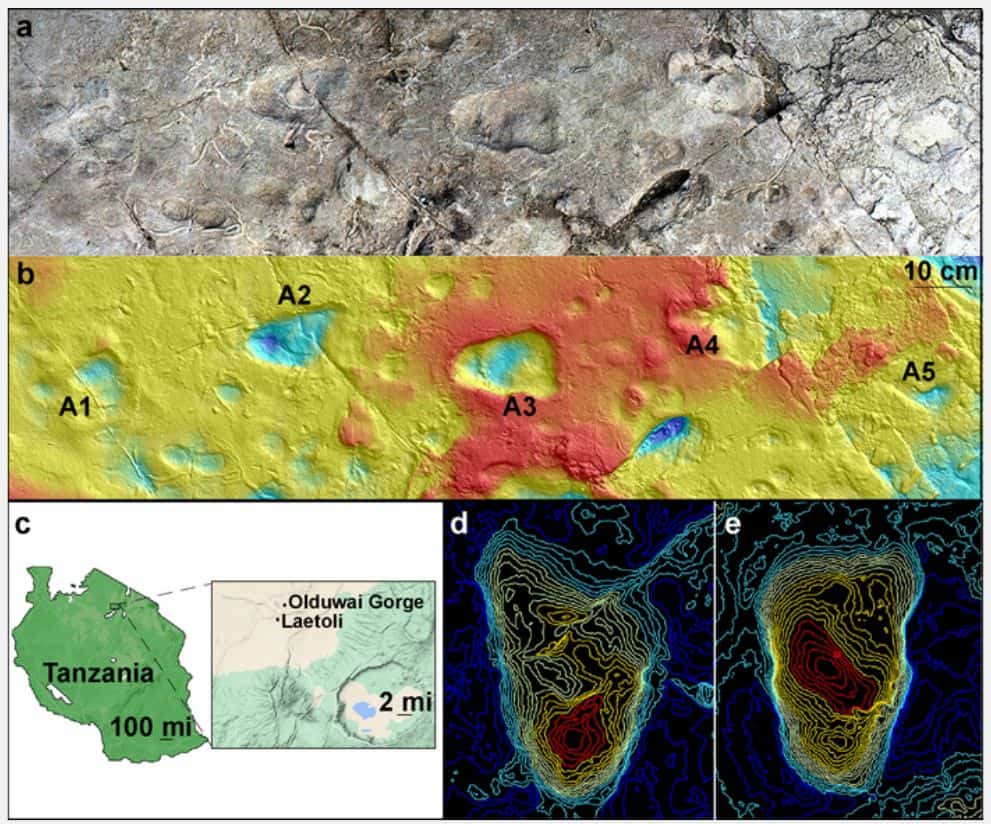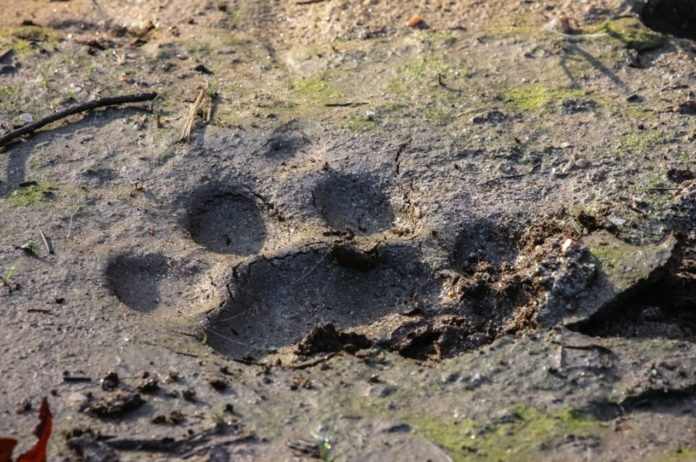Results show that multiple species of hominins co-existed on the landscape
Footprints discovered by paleontologist Mary Leakey and her team in Laetoli, Tanzania, in 1978 are the oldest unequivocal evidence of upright walking in the human lineage.
The bipedal trackways may be traced back 3.7 million years. In 1976, another set of strange footprints was partially excavated at nearby Site A, but they were disregarded as bear footprints.
According to a new study published in Nature, a recent re-excavation of the Site A footprints at Laetoli and a rigorous comparison analysis suggest that the footprints were made by an early human— a bipedal hominin.
“Given the increasing evidence for locomotor and species diversity in the hominin fossil record over the past 30 years, these unusual prints deserved another look,” said lead author Ellison McNutt.
The bipedal (upright walking) footprints at Laetoli Site A attracted McNutt. The spectacular trackway of hominin footprints at Sites G and S, which are largely acknowledged as Australopithecus afarensis—the species of the renowned partial skeleton “Lucy”—have made Laetoli famous. Some experts felt the tracks at Site A were created by a baby bear walking upright on its hind legs because they were so distinctive.

In June 2019, an international research team led by co-author Charles Musiba, an associate professor of anthropology at the University of Colorado Denver, traveled to Laetoli to re-excavate and thoroughly clean the five successive footprints in order to discover maker. They discovered signs that the fossil footprints were formed by a hominin, including a massive heel and big toe impression. The footprints were scanned in 3D, photographed, and measured.
The Laetoli Site A footprints were compared to those of black bears (Ursus americanus), chimps (Pan troglodytes), and humans (Homo sapiens).
They collaborated with co-authors Ben and Phoebe Kilham, who manage the Kilham Bear Center in Lyme, New Hampshire, which specializes in black bear rescue and rehabilitation. At the Center, they found four semi-wild adolescent black bears with feet that were identical in size to the Site A footprints. Each bear was enticed to rise up and walk on their hind legs through a mud-filled trackway in order to capture their footprints with maple syrup or apple sauce.
In addition, almost 50 hours of video footage of wild black bears was collected. Since the bears walked on two feet for less than 1% of the overall observation time, it’s doubtful that a bear left footprints at Laetoli, especially since no footprints of this individual walking on four legs were discovered.
“As bears walk, they take very wide steps, wobbling back and forth,” said senior author Jeremy DeSilva.
“They are unable to walk with a gait similar to that of the Site A footprints, as their hip musculature and knee shape does not permit that kind of motion and balance.”
According to the experts, bear heels taper and their toes and feet are fan-like, whereas early human feet are squared off and feature a prominent big toe. Surprisingly, the Site A footprints show a hominid crossing one leg over the other while walking, a movement known as “cross-stepping.”
“Although humans don’t typically cross-step, this motion can occur when one is trying to reestablish their balance,” said McNutt.
“The Site A footprints may have been the result of a hominin walking across an area that was an unlevel surface.”
The study discovered that chimps have relatively thin heels compared to their forefoot, a trait shared with bears, based on footprints gathered from semi-wild chimps at Ngamba Island Chimpanzee Sanctuary in Uganda and two captive adolescents at Stony Brook University. However, Laetoli footprints, including those found at Site A, have broad heels in comparison to their forefoot.
The impressions of a massive hallux (big toe) and a smaller second digit were also found in the Site A footprints. Humans and chimps have a similar size disparity between their two digits, while black bears did not. These characteristics support the theory that the footprints were left by a hominid on two legs. However, when the inferred foot proportions, morphology, and likely gait of the Laetoli footprints at Site A are compared to those of Australopithecus afarensis at Sites G and S, the results show that the Site A footprints are unique from those of Australopithecus afarensis at Sites G and S.
“Through this research, we now have conclusive evidence from the Site A footprints that there were different hominin species walking bipedally on this landscape but in different ways on different feet,” said DeSilva, who focuses on the origins and evolution of human walking.
“We’ve had this evidence since the 1970s. It just took the rediscovery of these wonderful footprints and a more detailed analysis to get us here.”
Source: Nature
Image Credit: iStock
You were reading: Footprints found at Laetoli Tanzania belongs to early humans, not bears – study confirms
